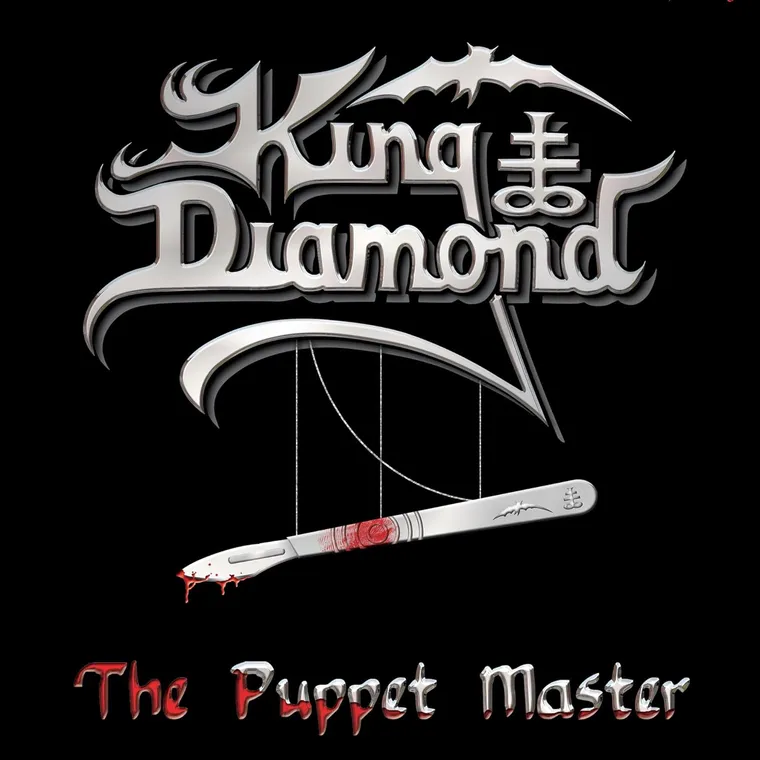Released on October 21, 2003, King Diamond’s The Puppet Master didn’t modernize his sound — it reaffirmed his role as metal’s most theatrical storyteller. This wasn’t a nostalgia trip. It wasn’t a desperate grasp at past glory. It was a confident, ghoulish reaffirmation of what he does best: weave nightmares through falsetto and riff.
At a time when metal was moving toward downtuned aggression or polished accessibility, King Diamond stayed firmly in his lane — ornate, conceptual, and unmistakably his. The Puppet Master isn’t just an album. It’s a horror opera soaked in atmosphere and blood. And while it may not reinvent the King Diamond formula, it sharpens it to a surgical point.
If Abigail was a haunted mansion, The Puppet Master is a cursed theater — creaking with mood, crawling with menace, and held together by hooks both musical and narrative.
From Coven to Curtain Call: A Story Still Worth Telling
King Diamond has always been metal’s master of the macabre. Ever since his Mercyful Fate days, he’s been spinning concept albums like twisted campfire tales — full of ghosts, possession, murder, and revenge. But The Puppet Master is something else. It’s not just creepy — it’s tragic.
Set in 18th-century Hungary, the album tells the story of a young couple torn apart by a deranged puppet master and his sinister wife. Corpses are turned into marionettes. Souls are trapped. Love is lost. And yet, despite the grim setting, it plays like a twisted fairy tale with metal guitars instead of violins.
Livia Zita’s inclusion as a co-vocalist adds weight to the storytelling. She’s not just a backing voice — she’s a character, giving emotional contrast to King’s theatrics. The result is a more immersive, layered narrative than some of his earlier efforts. You’re not just listening to songs — you’re watching the curtains rise on a nightmare you can’t escape.
Hooks, Harmonies, and Horrors: What The Puppet Master Sounds Like
The album begins with the title track, and instantly you know you’re in King Diamond territory. There’s that eerie harpsichord, the cinematic keyboards, the galloping riff — and then that voice. King’s falsetto pierces through like a scream in an empty theater, but he balances it with midrange snarls and ominous whispers. He’s not just singing — he’s acting.
From there, it’s a carousel of darkness. “Magic” swings between haunting ballad and metallic assault. “Emerencia” is full of frantic guitar runs and chilling melody. “Blue Eyes” might be one of the most emotionally effective songs he’s written — a ballad with real sorrow behind the stage blood.
Andy LaRocque’s guitar work is, as always, masterful. His solos are tasteful, classically inspired, and melodic without ever sounding sterile. He and Mike Wead keep the riffs dynamic — balancing traditional heavy metal chug with neoclassical flair and theatrical arrangement. Even the slower moments never drag. They’re part of the pacing — the quiet before the puppet strings snap.
The back half of the album — especially tracks like “No More Me” and “Darkness” — doubles down on atmosphere. There’s less bombast, more dread. The drama builds, not just musically, but emotionally. When the story hits its final, tragic note, it lands — not just as a horror ending, but as genuine heartbreak.
Drama with Depth: Emotion Beneath the Horror
What makes The Puppet Master stand out isn’t just the concept or the costumes — it’s the sincerity. King Diamond doesn’t treat his stories like gimmicks. He believes in them. And that conviction comes through in every scream, every solo, every layered harmony.
Beneath the corpse paint and cobwebs, there’s real feeling here. “So Sad” isn’t just a dramatic interlude — it’s a mourning song. “Blood to Walk” is a twisted rebirth, both musically and narratively. Even in his most theatrical moments, King never loses sight of the human tragedy at the center of the tale.
That emotional core — paired with strong songwriting — makes The Puppet Master more than just another horror concept album. It’s a heavy metal requiem, draped in velvet and stained with tears.
The Production: Gothic, Polished, and Perfectly Fit
The production on The Puppet Master is rich without being overblown. The mix is spacious, letting every layer breathe — the guitars are crisp, the drums punch without overpowering, and the vocals are mixed with theatrical clarity. The keyboards and ambient effects — so crucial to the album’s mood — never feel cheesy or intrusive.
It’s a reminder that “theatrical” doesn’t have to mean “campy.” With the right restraint, it can be immersive. King Diamond walks that line better than anyone.
The Legacy: A Late-Career Standout That Holds Its Strings
By 2003, most bands with a two-decade legacy were coasting or crumbling. Not King Diamond. The Puppet Master stands tall not just as a solid album — but as one of the best in his catalog since the Conspiracy/The Eye era. It’s a late-career triumph that proves his storytelling still had teeth — and his voice still had that otherworldly power.
While newer fans might gravitate toward the classics, The Puppet Master is the hidden gem — the quiet standout that rewards close listening and full immersion. It’s not just a King Diamond album. It’s a King Diamond experience.
Final Verdict: 9 / 10
The Puppet Master isn’t just a concept album — it’s a gothic metal opera where every note, lyric, and riff serves the story. It’s dark, melodic, theatrical, and — most importantly — sincere.
It doesn’t try to modernize King Diamond’s sound. It doesn’t need to. It refines it. It trusts the drama. It leans into the character. And it delivers an emotionally powerful, musically rich performance that proves the King’s crown never fell off — it just got bloodier.
It’s not Abigail. It’s something quieter, sadder, and in many ways, braver.

